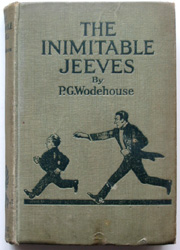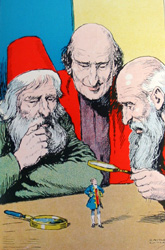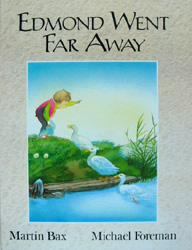Is there anyone who has not heard of Jeeves? The creation of P.G. Wodehouse, Jeeves has come to mean unbeatable and unmatchable. The valet to Bertie Wooster, he appeared in some 11 novels and over 30 short stories, forever extracting his master from the soup.
This novel, the second Jeeves collection but the first to be devoted solely to Jeeves, combines 11 stories previously published in the Strand Magazine. However the first six and the last one were split in two, making a book of 18 chapters.
Set in the 1920's in an England where the 1st World War does not appear to have occurred, you meet Bertie Wooster, a wealthy, happy go lucky character, a member of the idle rich, full of good intentions, but beset by 'The Code' which forces him to never let a pal down, 'noblesse oblige', and to be a 'preux chevalier' etc. Bertie spends much of his time in the Drones Club, where he meets most of his pals. He is beset by a bevy of Aunts, some good, like Dahlia, and some terrifying, like Agatha. Luckily he has Jeeves to help him out. Without him, Bertie's life would be even more chaotic than it is: he makes an excellent hangover cure, his bets usually win and he's intelligent enough to rescue Bertie from nearly any situation. He disapproves of Bertie's more garish items of clothing, and will take it upon himself to deal with the offending item.





















